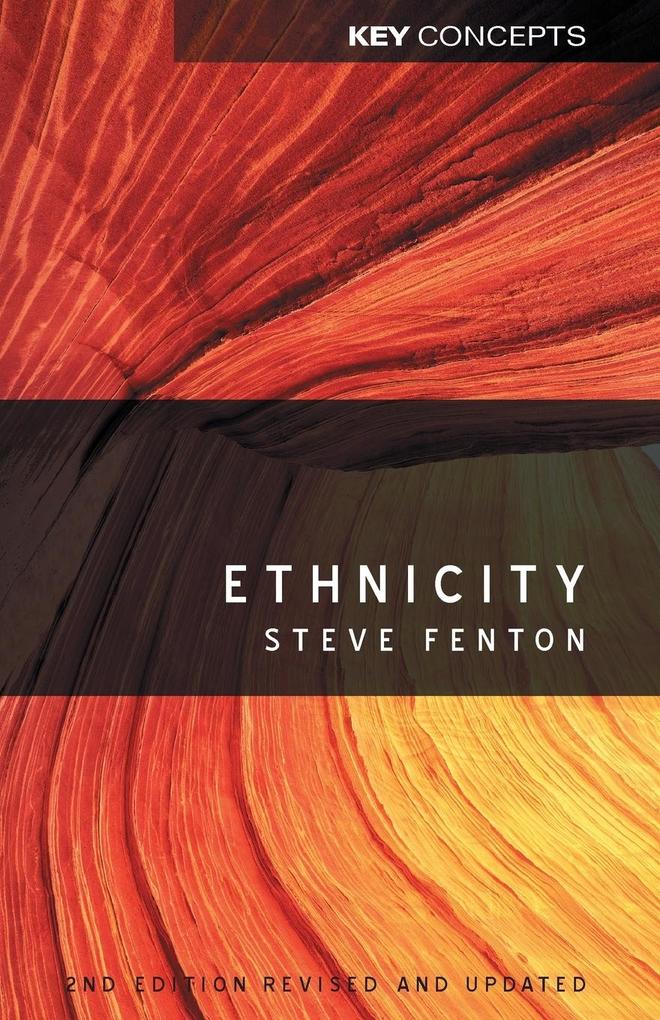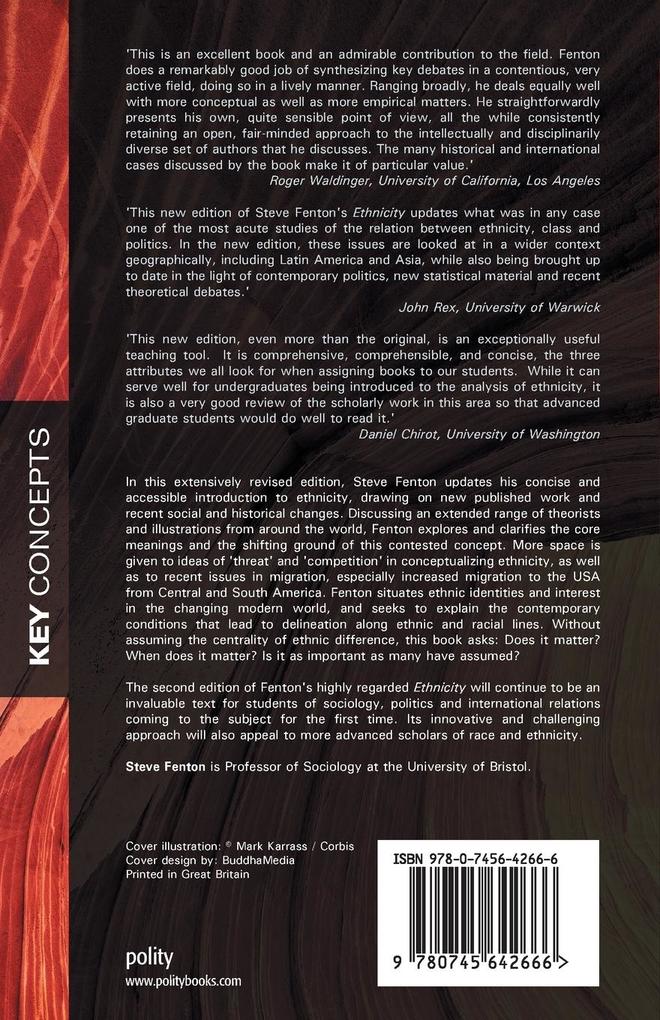
Zustellung: Do, 22.05. - Di, 27.05.
Versand in 2 Wochen
VersandkostenfreiBestellen & in Filiale abholen:
A concise and accessible introduction to the concept and history of ethnicity.
Draws on a wide range of theorists and illustrations from around the world to explore and clarify the core meanings and shifting ground of this concept.
In this extensively revised edition, Steve Fenton updates his concise and accessible introduction to ethnicity, drawing on new published work and recent social and historical changes. Discussing an extended range of theorists and illustrations from around the world, Fenton explores and clarifies the core meanings and the shifting ground of this contested concept. More space is given to ideas of 'threat' and 'competition' in conceptualizing ethnicity, as well as to recent issues in migration, especially increased migration to the US from Central and South America. Fenton situates ethnic identities and interest in the changing modern world, and seeks to explain the contemporary conditions of delineation along ethnic and racial lines. Without assuming the centrality of ethnic difference, this book asks: Does it matter? When does it matter? Is it as important as many have assumed?
The second edition of Fenton's highly regarded Ethnicity will continue to be an invaluable text for students of sociology, politics and international relations coming to the subject for the first time. Its innovative and challenging approach will also appeal to more advanced scholars of race and ethnicity.
The second edition of Fenton's highly regarded Ethnicity will continue to be an invaluable text for students of sociology, politics and international relations coming to the subject for the first time. Its innovative and challenging approach will also appeal to more advanced scholars of race and ethnicity.
Inhaltsverzeichnis
Preface to the Second Edition. Introduction.
Chapter 1. Ethnos: descent and culture communities.
Chapter 2. Multiple Discourses of Ethnicity: differences by country and region.
Chapter 3. The Demise of Race: the emergence of 'ethnic'.
Chapter 4. The Primordialism Debate.
Chapter 5. How Real are Groups? Political ethnicity, symbolic ethnicity, competition theory.
Chapter 6. Migration and Ethnicity.
Chapter 7. Social Conditions of Ethnicity: global economy and precarious states.
Chapter 8. Ethnic Majorities and Nationalism in Europe: globalization and right wing movements.
Chapter 9. Ethnicity and the Modern World: general conclusions.
Bibliography.
Chapter 1. Ethnos: descent and culture communities.
Chapter 2. Multiple Discourses of Ethnicity: differences by country and region.
Chapter 3. The Demise of Race: the emergence of 'ethnic'.
Chapter 4. The Primordialism Debate.
Chapter 5. How Real are Groups? Political ethnicity, symbolic ethnicity, competition theory.
Chapter 6. Migration and Ethnicity.
Chapter 7. Social Conditions of Ethnicity: global economy and precarious states.
Chapter 8. Ethnic Majorities and Nationalism in Europe: globalization and right wing movements.
Chapter 9. Ethnicity and the Modern World: general conclusions.
Bibliography.
Mehr aus dieser Reihe
Produktdetails
Erscheinungsdatum
22. März 2010
Sprache
englisch
Auflage
2nd Revised, Updated edition
Seitenanzahl
232
Reihe
Key Concepts
Autor/Autorin
Steve Fenton
Verlag/Hersteller
Produktart
kartoniert
Gewicht
319 g
Größe (L/B/H)
217/139/24 mm
ISBN
9780745642666
Entdecken Sie mehr
Pressestimmen
"This is an excellent book and a very worthy contribution to the field. Fenton does a remarkably good job of synthesizing key debates in a contentious, very active field, doing so in a lively manner. Ranging broadly, he deals equally well with more conceptual as well as more empirical matters. He straightforwardly presents his own, quite sensible point of view, all the while consistently retaining an open, fair-minded approach to the intellectually and disciplinarily diverse set of authors that he discusses. The many historical and international cases discussed by the book make it of particular value."
--Roger Waldinger, University of California
"This new edition of Steve Fenton's Ethnicity updates what was in any case one of most acute studies of the relation between ethnicity and other factors such as class. In the New Edition these issues are looked at in a wider context geographically including Latin America and Asia, while also bringing them up to date in the light of contemporary politics, new statistical material and recent theoretical debates."
--John Rex, University of Warwick
"This new edition, even more than the original, is an exceptionally useful teaching tool. It is comprehensive, comprehensible, and concise, the three attributes we all look for when assigning books to our students. While it can serve well for undergraduates being introduced to the analysis of ethnicity, it is also a very good review of the scholarly work in this area so that advanced graduate students would do well to read it."
--Daniel Chirot, University of Washington
--Roger Waldinger, University of California
"This new edition of Steve Fenton's Ethnicity updates what was in any case one of most acute studies of the relation between ethnicity and other factors such as class. In the New Edition these issues are looked at in a wider context geographically including Latin America and Asia, while also bringing them up to date in the light of contemporary politics, new statistical material and recent theoretical debates."
--John Rex, University of Warwick
"This new edition, even more than the original, is an exceptionally useful teaching tool. It is comprehensive, comprehensible, and concise, the three attributes we all look for when assigning books to our students. While it can serve well for undergraduates being introduced to the analysis of ethnicity, it is also a very good review of the scholarly work in this area so that advanced graduate students would do well to read it."
--Daniel Chirot, University of Washington
Bewertungen
0 Bewertungen
Es wurden noch keine Bewertungen abgegeben. Schreiben Sie die erste Bewertung zu "Ethnicity" und helfen Sie damit anderen bei der Kaufentscheidung.























